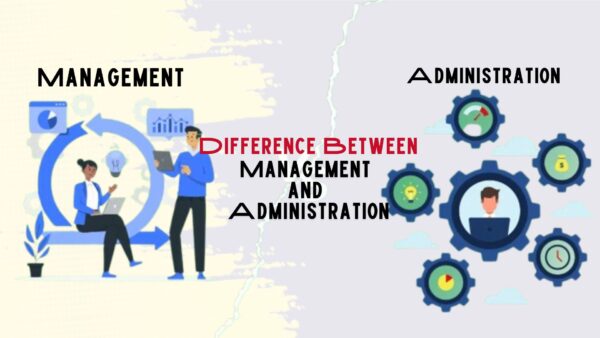At first glance, management and administration might seem like interchangeable terms, or perhaps just different labels for the same function. However, that’s not the case. While they may overlap in some areas, management and administration have distinct roles, responsibilities, and functions within an organization. If you’re feeling unsure about the differences between these two, don’t worry—you’re not alone. In this post, we’ll break down the core distinctions between management and administration to clear up any confusion.
What is Management?
Management is all about the day-to-day operation of a business. It’s a systematic process of organizing people, managing resources, and ensuring that the organization meets its goals. Managers are responsible for making decisions that affect daily activities, from allocating resources to overseeing staff. Their primary focus is on efficiency—ensuring that tasks are completed, objectives are met, and the organization runs smoothly.
In short, management involves steering the organization toward achieving short-term goals, optimizing resources, and guiding teams to execute tasks effectively. It’s hands-on and closely connected to the practical side of running a business.
What is Administration?
Administration, on the other hand, takes on a broader, more strategic role. It’s about setting the overarching direction and policies that guide the entire organization. While management focuses on day-to-day operations, administration is concerned with long-term planning, regulatory compliance, and overall organizational governance.
Administrators make high-level decisions that shape the company’s future. They develop strategies, create policies, and ensure that the organization complies with legal and governmental regulations. Essentially, administration sits at the top of the organizational hierarchy, establishing the framework within which management operates.
Management vs. Administration: Key Differences
1. Scope and Focus
Management is focused on implementation. It’s concerned with putting plans into action and ensuring that operations run efficiently. Managers direct resources, lead teams, and ensure that tasks are completed in alignment with the organization’s goals.
Administration, by contrast, sets the strategic direction. It’s more about big-picture thinking, planning for the future, and setting the policies that management follows. In essence, administration creates the roadmap, and management ensures that the organization follows it.
2. Responsibilities
Managers are responsible for day-to-day decision-making. They are like the conductors of an orchestra, ensuring that all parts of the organization work in harmony to achieve specific goals. Their focus is operational—they take the strategies developed by administration and turn them into action.
Administrators, however, are the architects of the organization. They are responsible for long-term planning and decision-making at the highest level. They determine the mission, set policies, and ensure that the organization is on track to achieve its broader objectives.
3. Areas of Influence
The influence of management is typically operational and short-term. Managers ensure that employees are productive, resources are allocated correctly, and tasks are completed efficiently. Their domain is the everyday functioning of the business.
Administration, on the other hand, operates at a strategic level. Administrators set the long-term vision and policies that will guide the organization’s growth. Their influence is broad, affecting the entire organization and its direction over the long haul.
4. Hierarchical Position
Management operates in the middle of the organizational structure, overseeing the execution of plans and handling the nuts and bolts of the business. Managers are more hands-on and are involved in ensuring that daily operations meet the organization’s goals.
Administration is at the top of the hierarchy. Administrators are responsible for making the high-level decisions that set the course for the organization. They focus on the long-term vision, leaving the day-to-day operations to management.
5. Skills and Expertise
Managers need a blend of technical expertise and people skills. They must be able to manage resources effectively, motivate teams, and ensure that the organization’s short-term goals are met. Problem-solving, leadership, and communication are key skills in management.
Administrators, on the other hand, need strong strategic thinking and decision-making abilities. Their role requires an understanding of policy development, long-term planning, and governance. They focus on the bigger picture, shaping the organization’s future direction.
6. Role Across Sectors
While management is essential across all types of organizations, administration is often more prevalent in sectors like government, education, and non-profits. In these environments, the focus is less on profit and more on mission-driven goals, making administration more central to the organization’s success. In contrast, management is crucial in both profit-driven and mission-driven organizations, as it ensures that operational goals are met efficiently.
Conclusion
In summary, management and administration play distinct yet complementary roles in any organization. Management handles the operational side of things, focusing on daily tasks and short-term goals. Administration, meanwhile, takes a broader approach, setting the vision, policies, and long-term strategies that guide the organization’s growth.
Now that you’re clear on the differences, it should be easier to understand the role each plays in a workplace. Whether it’s management ensuring everything runs smoothly or administration planning the future, both are vital to an organization’s success.




